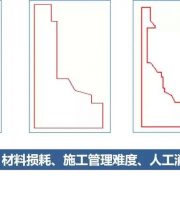(2) Shrinkage: must be less than 0.05%.
(4) Operation time: the effective operation time of plastering gypsum in construction shall not be less than 60 minutes.
(2) No interface treatment is required when plastering gypsum.
(6) The plastering gypsum shall meet the indexes of fineness, setting time, bending strength and compressive strength in the industry standard.
01 Essential indicators (1) Water retention: refer to the filter paper test methods in Britain, Germany, Japan and other countries, and the water retention must be more than 96%.
Before plastering the plaster on the surface with iron trowel, the surface shall be rubbed with foam plastic trowel dipped in water to make the surface smooth.
(4) Calendering shall be carried out before final setting, and it is advisable to press the surface with fingers without obvious indentation (generally, polishing shall be carried out about 30 minutes after plastering).
Gypsum powder is mainly used to fill holes in seams and straighten internal and external corners, and it is very hard to grind after setting, and the setting speed is very fast.
Otherwise, after the interface agent is dried into a film, it becomes the separation film between the plastering gypsum layer and the aerated concrete wall, which directly affects the bonding strength of the two.
(5) Bond strength: the bond strength between plastered gypsum and aerated concrete shall not be less than 0.8Mpa when tested by compression shear method.
(5) After the goods are purchased on site, necessary trial matching shall be carried out to preliminarily master the water-cement ratio and various physical properties, and beware of low-quality products entering the site to ensure the later quality of the plastered gypsum wall.
.
The slurry prepared each time must be used up before the initial setting of the slurry, otherwise the plaster layer will be cracked, pulverized, and without strength.
What are the necessary indicators and precautions for plastering gypsum on aerated concrete walls? Let’s have a look.
02 Precautions (1) It is necessary to clean the floating ash, oil and other objects on the wall, and properly wet the wall in advance, but it must be ensured that the water is even and consistent, and there is no open water on the aerated wall surface during plastering.
(3) During slurry preparation, the one-time feeding amount should be the amount of slurry used up within the specified time.
If the interface agent is used to paint the aerated wall, the plastering gypsum must be carried out when the interface agent is wet.
(3) Crack resistance: according to the current test method in the industry, there is no crack after 24 hours, constant temperature and quantitative wind speed test.

